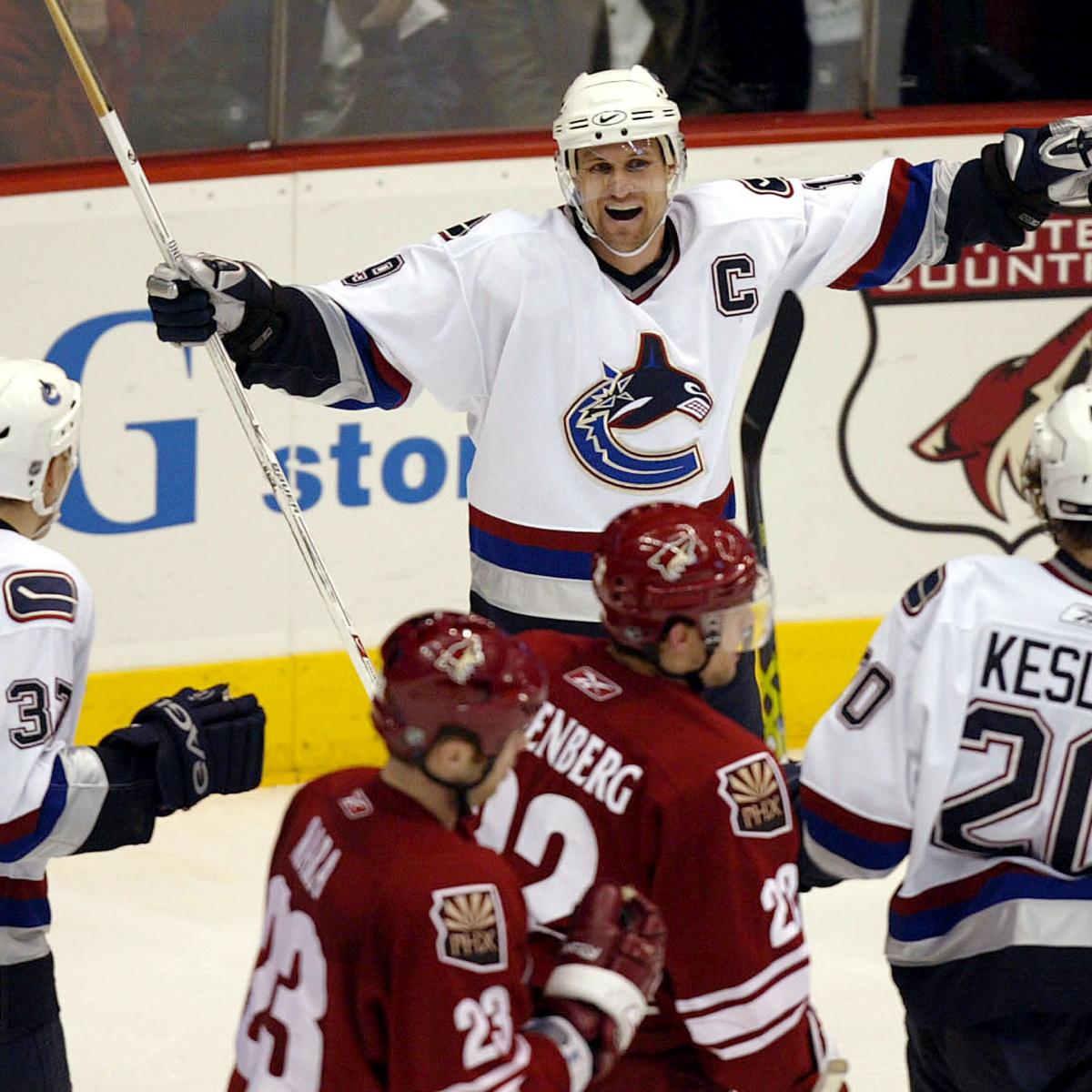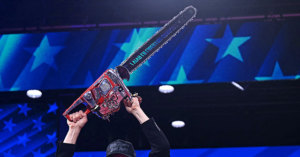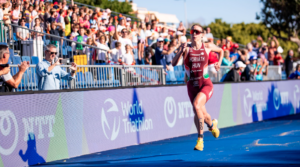https://bleacherreport.com/articles/2939374-10-nhl-trade-deadline-deals-that-teams-soon-regretted
0 of 10

ROBERT SCOTT BUTTON/Associated Press
Many deals that paid significant dividends to the acquiring teams have taken place during the NHL’s annual trade deadline.
Some of the more impactful moves in recent years saw the Los Angeles Kings acquire Jeff Carter (2012) and Marian Gaborik (2014), the Tampa Bay Lightning bring in Ben Bishop (2013) and the New York Rangers deal for Martin St. Louis (2014).
On the other hand, there have also been trades that would prove regrettable.
One notable blunder saw the Calgary Flames trade a young forward who blossomed into one of the greatest goal scorers of all time. Another saw the Pittsburgh Penguins ship out a struggling winger who became one of the greatest players in Vancouver Canucks history.
Time will tell whether any of the teams involved in this year’s trade deadline deals end up making comparable blunders. Any general managers aware of NHL history understand the potential for such moves to backfire.
Here’s a look at 10 that several teams came to regret.
1 of 10

David Zalubowski/Associated Press
The Vegas Golden Knights shocked the hockey world by becoming a playoff team during their inaugural season in 2017-18. Then-general manager George McPhee was in the market for some experienced scoring depth when he shipped three draft picks to the Detroit Red Wings for winger Tomas Tatar on Feb 26, 2018.
McPhee sang Tatar’s praises, citing his speed, versatility and 20-plus-goal performances over the previous three seasons with the Red Wings. However, the Slovakian winger failed to play up to expectations, managing just six points in 20 regular-season games. Scratched from all but eight postseason contests, he played only a minor role in the Golden Knights’ march to the 2018 Stanley Cup Final.
The Vegas GM saved face in September 2018 by bundling Tatar, promising center Nick Suzuki and a draft pick to the Montreal Canadiens for winger Max Pacioretty. Plus, the Wings have yet to see any significant return on those draft picks.
Still, acquiring Tatar remains the only blight on McPhee’s otherwise stellar first season managing the Golden Knights.
2 of 10

Gene J. Puskar/Associated Press
The New York Rangers were Stanley Cup finalists in 2014 and Presidents’ Trophy winners and Eastern Conference finalists the following season. They were among the top three teams in the conference in 2015-16 but were showing signs of decline when they acquired center Eric Staal from the Carolina Hurricanes just before the March 1 trade deadline.
It became a deal both clubs would regret.
Staal spent nearly 12 seasons in Carolina, becoming one of the best players in franchise history. With the Hurricanes rebuilding and his production diminishing, they shipped him to the Rangers for two second-round picks and prospect Aleksi Saarela. The returns, however, failed to turn into useful NHL players.
The Rangers also didn’t get much bang for their buck with Staal. He tallied just six points in 20 regular-season games and none in five playoff games as the Blueshirts were bounced from the opening round by the Pittsburgh Penguins. He went on to spend four productive seasons with the Minnesota Wild until he was traded to the Buffalo Sabres in September 2020.
On March 26, he was shipped to the Montreal Canadiens.
3 of 10

Marcio Jose Sanchez/Associated Press
The San Jose Sharks were among the best teams in the Western Conference in 2006-07. Still, general manager Doug Wilson wanted to load up for the playoffs when he swung two deals before the Feb. 27 trade deadline. Both moves, however, would backfire.
On deadline day, Wilson traded winger Ville Nieminen, a prospect and a 2007 first-round pick (acquired from the New Jersey Devils) to the St. Louis Blues for veteran winger Bill Guerin. Two days earlier, he had shipped defenseman Josh Gorges and the Sharks’ 2007 first-rounder to the Montreal Canadiens for blueliner Craig Rivet.
The Sharks failed to advance beyond the second round of the 2007 playoffs. Guerin departed that offseason via free agency, signing with the New York Islanders. Rivet was traded to the Buffalo Sabres the following summer.
Meanwhile, the Blues used the pick they received from the Sharks to select winger David Perron, who helped them win the Stanley Cup in 2019. Gorges became a core blueliner for several years with the Canadiens, who used their pick from the Sharks to select high-scoring winger Max Pacioretty.
4 of 10

(Photo by Graig Abel/Getty Images)
The Toronto Maple Leafs were on the verge of missing the 1996-97 playoffs when they shipped Larry Murphy to the Detroit Red Wings for future considerations on March 18, 1997.
Recalling that move last May, the Detroit Free Press‘ Helene St. James recounted Wings senior vice president Jimmy Devellano calling the Murphy trade the “move of moves” because it was low-risk and high-reward.
In 2015, Sportsnet’s Luke Fox recalled that Murphy was a frequent target of derision among Leafs fans during his two seasons in Toronto despite putting up 100 points in 151 games. Presented with a last-minute opportunity to join the Red Wings, the long-suffering defenseman wasted no time waiving his no-trade clause.
The Leafs wound up with nothing to show from this move other than shedding Murphy’s contract. The Hall of Fame blueliner got the last laugh, helping the Red Wings win consecutive Stanley Cups in 1997 and 1998.
5 of 10

David Duprey/Associated Press
The Buffalo Sabres and Phoenix Coyotes were outside the 2002-03 playoff picture and looking to shake up their respective rosters as the March 11 trade deadline approached. The Coyotes packaged center Daniel Briere with a third-round pick in 2004 (that later became defenseman Andrej Sekera) to the Sabres for veteran Chris Gratton and a 2004 fourth-rounder.
A small but skilled forward, the 5’9″, 174-pound Briere scored 32 goals in 2001-02 and had 46 points in 68 games before he was shipped to Buffalo. The Coyotes, however, were enamored with the 6’4″, 226-pound Gratton’s size and physical game.
Gratton didn’t work out for the Coyotes, who shipped him to the Colorado Avalanche a year later. They would have been better off sticking with Briere, who blossomed into a star during his three-plus seasons in Buffalo. He played a major role in the Sabres’ march to consecutive Eastern Conference Finals in 2006 and 2007 before signing an eight-year, $52 million contract with the Philadelphia Flyers.
6 of 10

Mark Zaleski/Associated Press
As the April 3, 2013, NHL trade deadline approached, the Washington Capitals sat 10th overall in the Eastern Conference, two points out of the eighth and final playoff spot. Then-general manager George McPhee hoped to give his struggling club a boost by shipping prospect Filip Forsberg to the Nashville Predators for winger Martin Erat and minor leaguer Michael Latta.
Erat exceeded 40 points in seven straight seasons with the Predators, but his offensive skills were waning by the time the Capitals acquired him. While they clinched a playoff spot, he had little to do with it, managing just three points in nine regular-season games that year before he was held scoreless in four playoff contests.
The day before the March 5, 2014, deadline, he was shipped to the Phoenix Coyotes in a multi-player deal.
McPhee’s willingness to give up a highly touted prospect for a fading asset like Erat likely contributed to the Capitals’ decision not to renew his contract the following year. Meanwhile, Forsberg blossomed into a star with the Predators. He became their best offensive player, helping them reach the 2017 Stanley Cup Final and win the Presidents’ Trophy in 2018.
7 of 10

John Amis/Associated Press
The Atlanta Thrashers were out of the playoff picture approaching the Feb. 26, 2008, trade deadline. They also had to find a new home for winger Marian Hossa or risk losing him to the unrestricted free-agent market that summer, so he and forward Pascal Dupuis were shipped to the Pittsburgh Penguins in exchange for forwards Colby Armstrong, Erik Christensen, prospect Angelo Esposito and a 2008 first-round pick.
Hossa helped the Penguins become a Stanley Cup finalist before departing for the Detroit Red Wings as a free agent that summer. He went on to win three Cups with the Chicago Blackhawks and was inducted into the Hockey Hall of Fame in 2020.
Dupuis, meanwhile, spent eight seasons with the Penguins, helping them beat the Red Wings (and Hossa) for the Cup in 2009.
The return for the Thrashers was a bust. Christensen was traded to the Anaheim Ducks the following season, while Armstrong departed for the Toronto Maple Leafs as a free agent in 2010. Esposito never played in the NHL. Neither did Daultan Leveille, the player they selected with that first-round pick.
A little more than three years after this trade, the Thrashers relocated to Winnipeg and became the Jets.
8 of 10

Mike Butkus/Associated Press
The Calgary Flames were a powerhouse in 1988 when they made what became one of the most one-sided deals in NHL history.
The day before the March 8 trade deadline, they sent forwards Brett Hull and winger Steve Bozek to the St. Louis Blues in exchange for goaltender Rick Wamsley and defenseman Rob Ramage.
At the time, Hull was better known as the son of Hall of Famer Bobby Hull. He was in his first full season with Calgary at the time of the trade, tallying 26 goals and 50 points. The Flames, however, were loaded with offensive firepower but in need of additional depth in goal and on the blue line. It was a good short-term move as Wamsley and Ramage helped them win the Stanley Cup the following season.
Hull, however, became a superstar with the Blues and one of the highest-scoring players in NHL history. He tallied 741 career goals, took home the Hart Memorial Trophy and the Lester Pearson Award in 1991 and won Stanley Cups with the Dallas Stars in 1999 and Detroit Red Wings in 2002.
He joined his father in the Hall of Fame in 2009.
9 of 10

David Zalubowski/Associated Press
Markus Naslund was a skilled but inconsistent young winger in his third NHL season with the Pittsburgh Penguins in 1995-96. Their decision to ship him to the Vancouver Canucks for rugged winger Alek Stojanov on March 20, 1996, would become one of the most regrettable deals in franchise history.
Few paid much attention to the move at the time. As Paul Steigerwald recounted in the Pittsburgh Tribune-Review on Feb. 2, 2003, Naslund was a promising forward who had difficulty reaching his potential on what was, at the time, a deep Penguins roster. Stojanov, meanwhile, was a 6’4″, 225-pounder with power-forward potential.
Stojanov played just 45 games for the Penguins as injuries suffered in a car crash the following season hampered the remainder of his career. Naslund turned into one of the greatest players in Canucks history. He was named to the All-Star team in 2002, 2003 and 2004, winning the Lester Pearson Award (now the Ted Lindsay Award) in 2003.
10 of 10

(Photo by Focus on Sport/Getty Images)
Of all the lopsided deals that have occurred in NHL trade-deadline history, the March 4, 1991, transaction between the Hartford Whalers and Pittsburgh Penguins was perhaps the most consequential.
In a multi-player swap, the Whalers sent center Ron Francis and defensemen Ulf Samuelsson and Grant Jennings to the Penguins for center John Cullen, defenseman Zarley Zalapski and winger Jeff Parker.
The Penguins instantly benefited from the trade. Francis was an elite two-way forward, while Samuelsson was well-established as a physical defenseman. The duo played key roles in helping the Penguins win the Stanley Cup later that year and repeating in 1992. In 2007, Francis was inducted into the Hockey Hall of Fame.
The trade initially looked good for the Whalers. Cullen had 94 points at the time, while Zalapski was a skilled puck-moving defenseman. Three years later, they would be skating on other NHL clubs.
By 1997, the Whalers had moved to Carolina and become the Hurricanes. In 2006, former Whalers owner Richard Gordon told the Hartford Courant he considered that move “the worst trade in the history of hockey.”
Additional player info via Hockey Reference. Additional trade info via NHL Trade Tracker.













